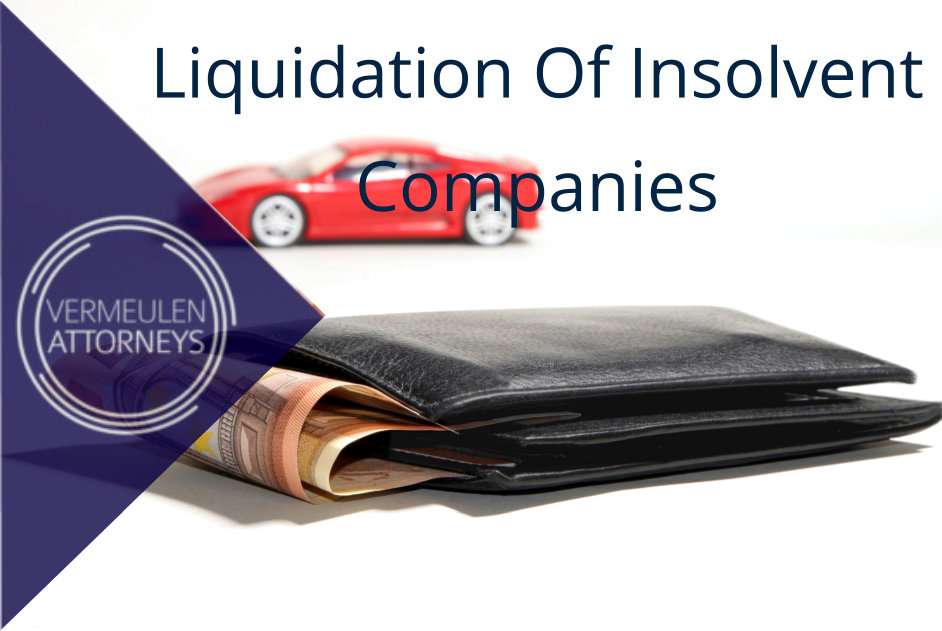
Liquidation Of Insolvent Companies
As previously discussed in the article regarding voluntary liquidations where the company being liquidated is solvent, liquidation is the process whereby a company or close corporation is wound up due to it not trading actively or its inability to continue trading in the normal course. The liquidation of a company will put an end to the juristic entity’s existence. The company is insolvent when it cannot pay its debts as and when it becomes due or where its liabilities exceed its assets.
When winding up a company or close corporation that is not a solvent company, the old Companies Act, 61 of 1973 (“the Act”) shall be applicable.
Section 343 of the Act provides for various modes of winding up, which are either by Court or voluntarily. A voluntary winding-up may be initiated by the company, creditors of the company or the members of a company.
- There are a number of circumstances in which a Court shall wind a company up, but for purposes of this article the relevant circumstances are:The company has resolved by special resolution that the company be wound up by Court;
- The company is unable to pay its debts as described in section 345.
Section 345 details the circumstances in this it is deemed that a company is unable to pay its debts and reads as follows:
(1) A company or body corporate shall be deemed to be unable to pay its debts if-
(a) a creditor, by cession or otherwise, to whom the company is indebted in a sum not less than one hundred rand then due-
(i) has served on the company, by leaving the same at its registered office, a demand requiring the company to pay the sum so due; or
(ii) in the case of any body corporate not incorporated under this Act, has served such demand by leaving it at its main office or delivering it to the secretary or some director, manager or principal officer of such body corporate or in such other manner as the Court may direct, and the company or body corporate has for three weeks thereafter neglected to pay the sum, or to secure or compound for it to the reasonable satisfaction of the creditor; or
(b) any process issued on a judgment, decree or order of any court in favour of a creditor of the company is returned by the sheriff or the messenger with an endorsement that he has not found sufficient disposable property to satisfy the judgment, decree or order or that any disposable property found did not upon sale satisfy such process; or
(c) it is proved to the satisfaction of the Court that the company is unable to pay its debts.
(2 In determining for the purpose of subsection (1) whether a company is unable to pay its debts, the Court shall also take into account the contingent and prospective liabilities of the company.
When launching an application to liquidate an insolvent company, there are a few factors that need to be taken cognizance of,
- The application to the Court must be accompanied by a certificate by the Master indicating that sufficient security has been given for the payment of all fees and charges necessary for the prosecution of all winding-up proceedings and of all costs of administering the company in liquidation;
- The application must be served on SARS, the Master of the High Court, all known creditors, the company, employees of the company and trade unions;
- In considering the application, the Court shall make an order that is just and equitable taking the circumstances into consideration. The application for liquidation is not merely a formality to end the existence of a company.
Similarly to voluntary liquidations where the company is solvent, Section 342 of the Act, describes what happens to the assets and costs of winding up, as follows:
“(1) In every winding-up of a company the assets shall be applied in payment of the costs, charges and expenses incurred in the winding-up and, subject to the provisions of section 435 (1) (b), the claims of creditors as nearly as possible as they would be applied in payment of the costs of sequestration and the claims of creditors under the law relating to insolvency and, unless the memorandum or articles otherwise provide, shall be distributed among the members according to their rights and interests in the company.
(2) The provisions of the law relating to insolvency in respect of contributions by creditors towards any costs shall apply to every winding-up of a company.”
Should you require any assistance with liquidation of either a company of which you are a member or a creditor, please contact our offices for assistance.











